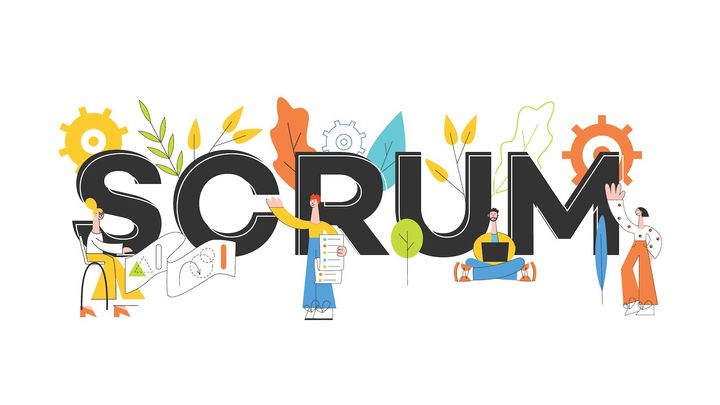
Jump To Section [hide]
If you’re someone who thinks of frameworks as a scam — you’re not alone.
Many people have come to associate product frameworks with trouble rather than a solution to real world challenges — a conception that has formed over the past few years.
Unfolding the Stigma Around Product Frameworks
The stigma around product frameworks stems from companies and individuals that offer “frameworks” only as a means to lure users towards their products — a mere stepping stone in their marketing efforts.
As a result, what we’re left with is a wide variety of frameworks — for every topic, and in every industry — with little knowledge on how to actually use them.
And today, it seems the situation has gotten quite out of hand; I recently came across a framework for relationship counseling that contained “metrics” to track all violations caused by your partner. And of course, these would be discussed in weekly review sessions.
So, it was inevitable that frameworks, or a product metrics framework like the example above, originally meant to provide a well-organized structure to any process, are now more often than not looked at in a negative light, especially in the product community.
Most aspiring product managers have fallen prey to the facade of flashy frameworks that only cause more trouble than offer any viable solutions.
But we’re not here to completely discredit product frameworks! After all, at its core, the true purpose of a product framework is to offer a template of practices you can follow to bring structure to any process.
However, without certain measures of caution, using your product framework would always be a gamble.
4 Things To Consider When Using Product Frameworks
The success of your product framework will always depend on certain factors. And being cautious about each of them will significantly improve your chances of success with your frameworks.
1. Find the right framework for your product
Not every framework you come across will be suitable for you and your product.
As a standard practice, it is critical to perform your due diligence in seeking out the framework that best suits your needs and fits your product well.
In your research for the right product framework, you’ll also likely come across two frameworks with contradicting guidance on how to use them.
This doesn’t necessarily indicate that either one of the two is a scam; they just might not be relevant to your situation.
A good way to identify the right frameworks is to watch out for non-credible sources and seek out frameworks that have actually been tried and tested by others with similar use cases.
2. Get appropriate and authentic training
Product frameworks are far from being straight-forward and easy to adopt right away.
Most frameworks you find will require some level of familiarizing and training.
There are some complex product frameworks for which you’ll find dedicated training programs online as well. But even this is being exploited and turned into a scamming business, so it’s important to be wary of what you’re getting yourself into.
I’d like to emphasize here that there is no need for any paid certification to get started with using a product development framework. In today’s world, most of the information and guidance you’ll need is already available out there — free of cost.
All you need to meticulously do is filter out the authentic ones from the rubble of unreliable ones.
The best way to do this is to:
- Get a sound understanding of any framework you pick for your use-case.
- Understand the limitations of your chosen framework, where it is most effective, and where it fails
- Review all original material available about the concept wherever possible (look for the original author of the information to check its authenticity).
- Connect with other community members and learn from their experience of the product framework: what worked for them? What didn’t?
3. Avoid getting blindsided
No framework you find out there will be 100% perfect!
Product frameworks are meant to be an aid to your process — not a stringent rulebook that is rigid and impedes the progress of your product team.
Anyone that considers product frameworks as the “absolute truth” would be a fool.
For every product, every team, and every circumstance, there will be different and distinct requirements. There’s no guarantee that what worked for companies like Google, Facebook, or Amazon will work for you — so it’s best not to get too excited and try implementing it on your own use-case.
It’s good to trust your gut and base your decision on what the framework actually brings with it, what it recommends, and whether or not it aligns with your fundamental principles.
Before getting started with a product framework, make the effort to truly understand what you can modify about your process in accordance with the guidelines and what cannot be changed for your specific framework.
4. Don’t over-rely on frameworks
Always remember: there’s no critical need to use frameworks — and using them just for the sake of having a product management framework in place is possibly one of the worst reasons to invest your time and effort into getting a framework.
The end goal in product management is always to solve customer problems, and do so effectively. Whether or not you have any particular framework in place holds no importance to the customer.
If, for example, you already have a prioritization method or product prioritization framework that works for you better than MoSCoW or RICE, it’s completely fine to continue using that.
Product frameworks are very helpful when it comes to adding an overall clarity to your process and approach, and even more so for newcomers who need concrete and clear guidelines before handling any abstract task.
Takeaway
Product managers want to solve customer problems, and product frameworks are tools that help you solve problems in pretty much every situation.
For any process, and at any given point in time, there will always be multiple tools that you can choose from and use. But the important thing here is to identify and choose the right tool that works well with you and your product and actually helps you execute your processes more efficiently.
As with any tool, it’s important to know how to use the framework effectively before getting started.
Product frameworks are created to address pre-defined problems, but in the real-world, your situation will always be unique and the tools you use may require adjustment in accordance with your circumstance.
Finally, there’s absolutely no obligation to continue with an existing tool. If you have another method that does the job better, don’t take the added burden of additional costs to use the tool.
Learn what works, gauge your own limitations, and apply methods and product frameworks that actually align with your needs.



